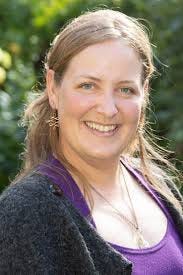Understand Physical Realities
Accept and Adapt
Live within Gaia
As the Fossil Fuel Age winds down to its confusing but inevitable end it is likely that there will be a monastic revival. In this series of posts we explore this possibility using the ideas presented in the 2024 Posbury St. Francis Annual Lecture, given by Dr. Bethany Sollereder. The lecture’s title was Radical Hope: the roots of courage in inevitable climate change.
Dr. Sollereder talked about how monasticism is one response to ‘inevitable climate change’. A screen shot of one of her slides is shown below. In it she identifies ‘12 Marks of New Monasticism’. We discuss each of these 12 marks in the context of an Age of Limits.
The posts in this series are:
Mark 1: Abandoned places of Empire,
Mark 2: Sharing economic resources,
Mark 3: Hospitality to the stranger,
Mark 4: Lament for racial divisions,
Mark 5: Humble submission,
Mark 6: Intentional Formation,
Mark 7: Nurturing common life,
Mark 8: Celibacy,
Mark 9: Geographical proximity to community members,
Mark 10: Care for God’s earth,
Mark 11: Peacemaking, and
Mark12 : Commitment to a discipline contemplative life.
The fourth ‘Mark’, the one that we discuss in this post, is,
Lament for racial divisions within the church and our communities combined with active pursuit of a just reconciliation.
I’m going to take a pass on this one. The goals are good, and deserve our full support. But I have three concerns.
First, I do not see much historical precedent. The early Christian monastic communities did try to practice the principles of universal brotherhood and equality before God, which could include a unity that goes beyond racial divisions. But they did not have the same concern regarding those divisions as we do in our time.
Second, society in the future is likely to be far more physically fragmented than it is now. Government of all forms ― including church government will be localized. Terms such as ‘just reconciliation’ will lose their meaning. How will we even know who the ‘other people’ are, or where they are located? All communities in the post-industrial age, regardless of their racial composition or historical makeup, will be scrambling to make a living in a world where the climate will be so unpredictable.
Third, goals such as these convey a hint of First World/Third World divisions. There is even a flavor of condescension. Those in today’s First World can afford to be apologetic and generous. But there is no reason to believe that today’s First World will continue to enjoy its elevated status given that it is already poor in natural resources (particularly oil), and that that resource poverty will get worse. There won’t be sufficient resources to send to other parts of the world.



